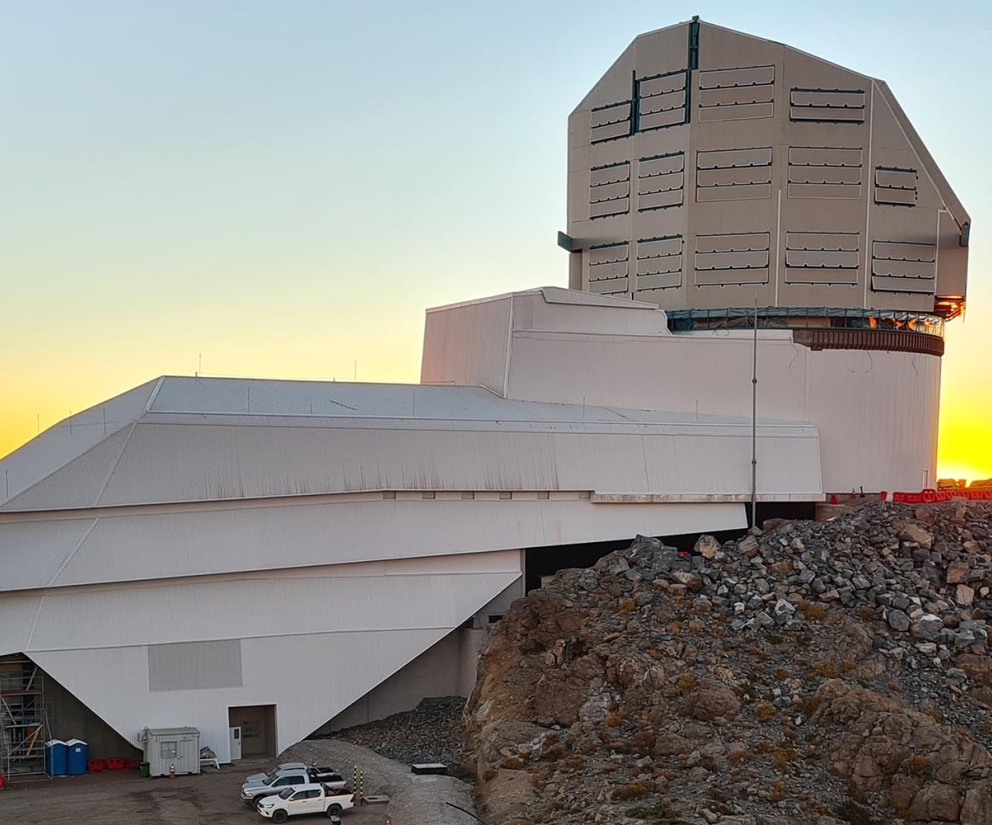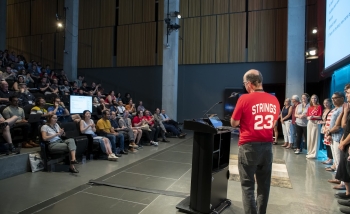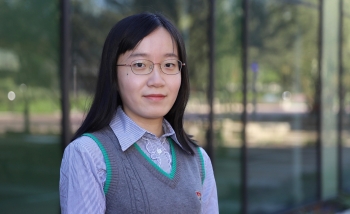PI's Freddy Cachazo wins major international prize
Perimeter Institute Faculty member Freddy Cachazo has been awarded the prestigious Gribov Medal from the European Physical Society (EPS), “for his research with others that led to significant simplifications in the calculation of scattering amplitudes in both gauge theories and gravity ones." The Medal is given once every two years for outstanding work in Theoretical Particle Physics and/or Field Theory by a physicist under 35. Dr. Cachazo will accept the medal at a prize ceremony on July 20 at the 2009 EPS-High Energy Physics Conference in Krakow.
Perimeter Institute’s Director Neil Turok commented, “We are delighted by this timely recognition of Freddy’s remarkable theoretical work. The principles underlying his research are profound. Besides being of immediate utility in the design and interpretation of giant experiments like the LHC, his results will be of enduring significance in the search for a simpler, unified description of nature's physical laws."
In a series of five papers published in 2004 and 2005, Cachazo and his collaborators developed new techniques for calculating the scattering amplitudes of subatomic particles [1-5]. This work has key implications for experimental investigations into the constituents of matter at particle accelerators such as the Large Hadron Collider (LHC). Upcoming accelerator experiments are expected to detect new particles and forces not accounted for in the Standard Model of physics; these may bring us closer to answering fundamental questions such as how particles acquire mass, or even why matter exists.
In order to discover such new phenomena, it is necessary to first precisely calculate what current theoretical models predict about particle interactions at very high energies. Dr. Cachazo’s innovation greatly simplifies these enormously complex calculations.
Accelerators smash subatomic particles together at near light speed, causing interactions which can yield entirely new types of particles in a process called scattering. Scientists measure the resulting outgoing particles, comparing this data against predicted values to determine whether current theoretical models account for all of the phenomena observed. Scattering amplitudes are calculations that yield the theoretical predictions for obtaining various outgoing particles when different incoming particles at various energies collide. They were traditionally calculated using a tool called Feynman diagrams. Thousands of these diagrams were required to calculate even simple particle interactions, and computing predictions about complex interactions, such as those the LHC can produce, was considered intractably difficult.
Dr. Cachazo and his collaborators had a fundamental insight: to calculate scattering amplitudes using the full range of complex numbers (which include real numbers as well as imaginary numbers), rather than only using the real numbers, as in the Feynman diagram method. The innovation ingeniously drew together ideas from quantum field theory and complex analysis, and remarkably, it yielded correct values far more simply and efficiently.
These new techniques are becoming increasingly important in high energy physics. Recent work, for example, has generalized and implemented the techniques in a software program called BlackHat [6,7] that automatically generates scattering amplitudes that match experimental data very accurately. It is hoped this will greatly accelerate progress in the field.
Cachazo et al’s discovery is also exciting for the mystery that lies at its core: why does using complex numbers yield such simple calculational forms for the scattering amplitudes? It appears to point to fundamental, as-yet-undiscovered physics related to theories of space and time. Dr. Cachazo is now pursuing this deeper theoretical understanding with collaborators including Dr. Nima Arkani-Hamed of the Institute for Advanced Study in Princeton, who is also a Perimeter Institute Distinguished Research Chair. These advances have thus opened frontiers in fundamental theory that may propel important discoveries in the years to come.
References:
[1] Freddy Cachazo, Peter Svrcek, Edward Witten. "MHV Vertices And Tree Amplitudes In Gauge Theory." Journal of High Energy Physics JHEP09 (2004) 006. http://arxiv.org/abs/hep-th/0403047 [2] Freddy Cachazo. "Holomorphic Anomaly Of Unitarity Cuts And One-Loop Gauge Theory Amplitudes." http://arxiv.org/abs/hep-th/0410077 [3] Ruth Britto, Freddy Cachazo, Bo Feng. "Generalized Unitarity and One-Loop Amplitudes in N=4 Super-Yang-Mills." Nucl.Phys. B 725: 275-305, 2005. http://arxiv.org/abs/hep-th/0412103 [4] Ruth Britto, Freddy Cachazo, Bo Feng. "New Recursion Relations for Tree Amplitudes of Gluons." Nucl.Phys.B 715:499-522, 2005. http://arxiv.org/abs/hep-th/0412308 [5] Ruth Britto, Freddy Cachazo, Bo Feng, Edward Witten. "Direct Proof Of Tree-Level Recursion Relation In Yang-Mills Theory." Phys.Rev.Lett.94:181602, 2005. http://arxiv.org/abs/hep-th/0501052 [6] C. F. Berger, Z. Bern, L. J. Dixon, F. Febres Cordero, D. Forde, H. Ita, D. A. Kosower, D. Maitre. "An Automated Implementation of On-Shell Methods for One-Loop Amplitudes." Phys.Rev.D 78:036003, 2008. http://arxiv.org/abs/0803.4180 [7] C. F. Berger, Z. Bern, L. J. Dixon, F. Febres Cordero, D. Forde, T. Gleisberg, H. Ita, D. A. Kosower, D. Maitre. "Precise Predictions for W + 3 Jet Production at Hadron Colliders." http://arxiv.org/abs/0902.2760
About PI
Perimeter Institute is the world’s largest research hub devoted to theoretical physics. The independent Institute was founded in 1999 to foster breakthroughs in the fundamental understanding of our universe, from the smallest particles to the entire cosmos. Research at Perimeter is motivated by the understanding that fundamental science advances human knowledge and catalyzes innovation, and that today’s theoretical physics is tomorrow’s technology. Located in the Region of Waterloo, the not-for-profit Institute is a unique public-private endeavour, including the Governments of Ontario and Canada, that enables cutting-edge research, trains the next generation of scientific pioneers, and shares the power of physics through award-winning educational outreach and public engagement.




